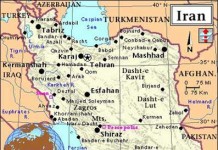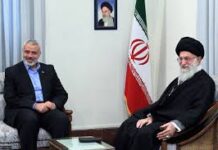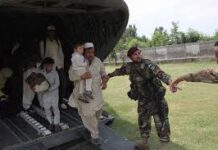Context

The five-day Non-Aligned Movement (NAM) summit was held from August 26-31 in Tehran, hosted by Mahmoud Ahmadinejad as Iran assumed the 3-year presidency of NAM. The 16th get-together was attended by more than 50 heads of states, including Indian Prime Minister Manmohan Singh, President Zardari of Pakistan, and President Mohammad Morsi of Egypt, along with the United Nations Secretary-General Ban Ki-moon. Senior representatives of China and Russia were also in attendance.
Western media and Iran were hard at work to shape the perceptions on the NAM Summit. The foreign policy journals in the US debated if the Americans should take the NAM conference seriously or not. While the West was attempting to exploit the differences that emerged at the meeting to demonstrate disunity, Iran, on the other hand, was striving to project NAM support and solidarity for its positions. At the opening ceremony, Iranian Foreign Minister Salehi commented,
“The non-aligned (movement) must seriously oppose … unilateral economic sanctions which have been enacted by certain countries against non-aligned countries.”
Meanwhile, India, Pakistan and Afghanistan used the conference not only to present their views on these crises but to also raise other matters that worry them.
Analysis
The Western Concerns
The proceedings of the conference received extensive media coverage and there were several reasons for that. Firstly, the mere fact that the meeting was being held in Iran was significant, as the West is trying hard to isolate the country using diplomacy, sanctions, and covert operations. Israel and the US extended direct pressure on Ban Ki-Moon to not attend; according to them his presence at the summit conveyed the wrong message.
Secondly, Iran is a lynchpin to the Syrian crisis due to closeness to the Syrian regime and influence over Hezbollah and Hamas.
Thirdly, the summit was the first visit of the Egyptian President to Iran. Since Morsi came to power, Western and Gulf quarters are worried about how the foreign policy of the country will change on Syria and the Israeli-Palestinian conflict. Both these conflicts will be greatly influenced by the direction of Egypt’s ties with Iran.
 Pakistan And NAM Summit
Pakistan And NAM Summit
Pakistan emphasized how the Iranian crisis can lead the already tinder region, towards wider instability. Addressing a debate on ‘Lasting Peace through Global Governance’ ahead of the Non-Aligned Movement summit, Hina Rabbani Khar commented that the Iranian nuclear issue will set off instability in the broader region. She called for dealing with the issue using instruments of dialogue and diplomacy using NAM principles of peaceful coexistence, respect for human rights and territorial integrity. On the other hand, President Zardari supported the principles of non-intervention and interference in the internal affairs of a state and expressed a desire for an immediate end to the conflict in Syria.
Khar used the NAM platform to raise concerns over the drone strikes. In an interview to Press TV of Iran she stated: “You see Pakistan’s position is clear today and has been clear in the past. Our position is that this is [drone strikes] something which is counter-productive. It is unlawful. It is illegal, and therefore they must cease. This is what the parliament of Pakistan has clearly said.”
Moreover, Pakistan stressed on collective efforts to deal with scarcity of energy and water. When Zardari and Ahmedinejad met on the sidelines of the summit, they reviewed enhanced energy and trade cooperation between the two countries. This is despite US pressure on Pakistan to curtail its ties with Iran. The review covered the IP gas pipeline project, the Taftan-Quetta power transmission line, the Gwadar power supply project, the construction of Noshki-Dalbandin part of Quetta-Taft Highway and upgrading of the Quetta-Taftan railway track.
In an approach similar to the one Pakistan has adopted with India, the two leaders discussed ways to ease issuing of visas and opening of the new border posts, Mand-Pishin and Gabe-Ramadan. These posts will link Karachi and Gawadar with Chah Bahar and Bandar Abbas using the coastal highway. Moreover, the two sides reportedly also made progress towards establishing air links between Islamabad and Tehran, and Peshawar, Quetta, and Gilgit with Mashhad.
India, Afghanistan And NAM Summit
Being a founding member of NAM, Indian position on Syria was not much different than the one articulated by Pakistan. Indian PM Manmohan Singh took a more cautioned line expressing support for democratic and pluralistic order in Syria while warning against external intervention that can make humanitarian crisis worse.
Before the Non-Aligned Movement (NAM) summit, India, Iran and Afghanistan held an important trilateral meeting on August 26 and agreed to set up a joint working group to stimulate trade and transit via the Iranian port of Chah Bahar. Some media reports projected that India has long wanted to develop the port as an alternative route to Afghanistan, bypassing Pakistan. However, the mere fact that Iran and Pakistan also discussed linking with the Chah Bahar port, negates this perception.
Speaking at the summit, President Karzai pointed out to terrorism as a major challenge in achieving regional cooperation. He emphasized defeating extremism requires regional and international cooperation. The Indian prime minister echoed a similar sentiment when he met President Zardari and conditioned his trip to Pakistan on speedy efforts against Indian centered terrorism, demonstrated by speedy conclusion of the Mumbai attack trial.
To allay regional distress that has emerged as a result of strategic pacts Afghanistan has signed with the US and other NATO countries, Karzai commented that these agreements do not diminish the Afghan commitment to NAM.
Conclusion
In short, the NAM conference exposed the regional anxiety on the fast flux underway in the Middle East, in which the role of Iran is pivotal. The mere attendance of the heads of states of India, Pakistan and Afghanistan reflects on the delicate balancing act these nations are playing. Clearly, regional ambitions are colliding with global tussles, and these countries do not want to blindly follow western dictates at the cost of regional instability. Meanwhile, Pakistan is moving fast forward to diversify its trade and energy ties with Iran. As it does, the sectarian clashes are intensifying.



